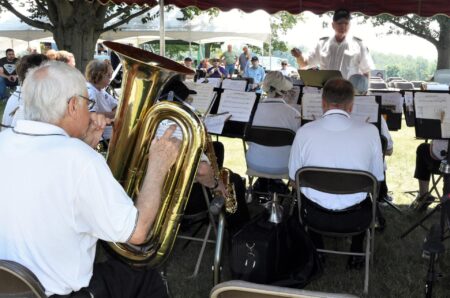HARRISBURG – As many consumers across Pennsylvania continue working to manage higher summer energy bills – driven by increased electric energy costs and hot weather – the Pennsylvania Public Utility Commission advises residents and businesses served by several major utilities that electric generation prices for non-shopping customers are expected to rise again on Sept. 1, 2022.
The PUC does not regulate prices for the generation portion of electric bills, which are driven by market forces and are reset up or down several times per year, based on the cost of obtaining the energy that non-shopping customers use. Generation prices are separate from the PUC-regulated rates that utilities charge for their distribution services – which cover the cost of operating and maintaining the infrastructure that delivers electricity to homes and businesses.
According to the PUC, with the continued impact of higher than normal energy prices, consumers should explore ways to manage their utility expenses, including – utilizing energy efficiency and conservation measures, closely monitoring electric bills, reviewing supplier contracts, and discussing affordability programs with their utilities.
September 1 “Price to Compare” Changes
Approximately half of Pennsylvania’s major electric distribution companies (EDCs) reset their energy prices on a quarterly basis, including PECO Energy, along with the state’s four FirstEnergy companies – Met-Ed, Penelec, Penn Power and West Penn Power.
September 1 is the next date for the quarterly adjustments to the “Price to Compare” (PTCs) for non-shopping customers served by those EDCs and the utilities are reporting the following changes for residential customers:
- Met-Ed, up from 7.936 cents to 9.397 cents per kilowatt hour (kWh) (18.4%);
- PECO, up from 7.637 cents to 8.508 cents per kWh (11.4%);
- Penelec, up from 8.443 cents to 10.021 cents per kWh (18.7%);
- Penn Power, up from 8.694 cents to 10.348 cents per kWh (19%); and
- West Penn Power, up from 8.198 cents to 8.306 cents per kWh (1.3%).
The PTC accounts for an average of 40% to 60% of the customer’s total utility bill. However, this percent varies by utility and by the level of individual customer usage. More information on pricing for electric generation supply, including product offerings from competitive electric generation suppliers, can be found on www.PAPowerSwitch.com.
Note: Customers using competitive suppliers for their electric generation will continue to pay the energy price detailed in their supplier contract and will not be impacted by the PTC change unless they return to the default service provided by their local utility. Additionally, customers in other parts of Pennsylvania served by utilities – including PPL and Duquesne Light – will NOT see any changes in their PTC until the next date for energy price resets, which is December 1.
#CallUtilitiesNow to Explore Customer Assistance Programs
The Commission continues to emphasize the importance of direct conversations between struggling customers and utilities. #CallUtilitiesNow continues to be the “first step” in addressing outstanding bill balances and discussing utility assistance programs.
Public utilities are the first and most direct mechanisms to link struggling households facing past-due balances with much-needed assistance and affordability options. Utilities understand the assistance programs available in their communities for income-qualified consumers – including utility-run Customer Assistance Programs, national programs like the Low-Income Home Energy Assistance Program (LIHEAP) and the Emergency Rental Assistance Program, and various hardship fund programs operated by utilities and non-profit organizations.
Utilities also can help enroll consumers in assistance programs, guide them to other available resources and discuss new payment plan options to address overdue balances and help consumers move forward.
Energy usage is a key factor in the size of summer energy bills, and there are many ways that consumers can control that usage. Energy saving tips include:
Managing Energy Usage
Pay attention to the thermostat – Every degree you raise or lower the temperature could impact energy costs by up to 3%. Also, consider a programmable thermostat to automatically raise temperatures while you are away from home.
Have your air conditioner serviced – Regular air conditioner maintenance along with clean air filters help ensure efficient operation of your cooling system.
Insulate and seal leaks around your home – Adding insulation, installing storm windows and doors, and sealing cracks and air leaks can help you stay cooler and use less energy.
Install or repair ceiling fans in high-trafficked rooms – Use ceiling fans to circulate the air, keeping the room and you cooler.
Protect windows to reduce heat buildup – Smart landscaping and exterior window coverings are just two ways that you can better protect windows and reduce the impact of heat buildup in your home.
The PUC’s electric shopping website PAPowerSwitch.com has interactive sections with more easy consumer tips for saving energy.





















